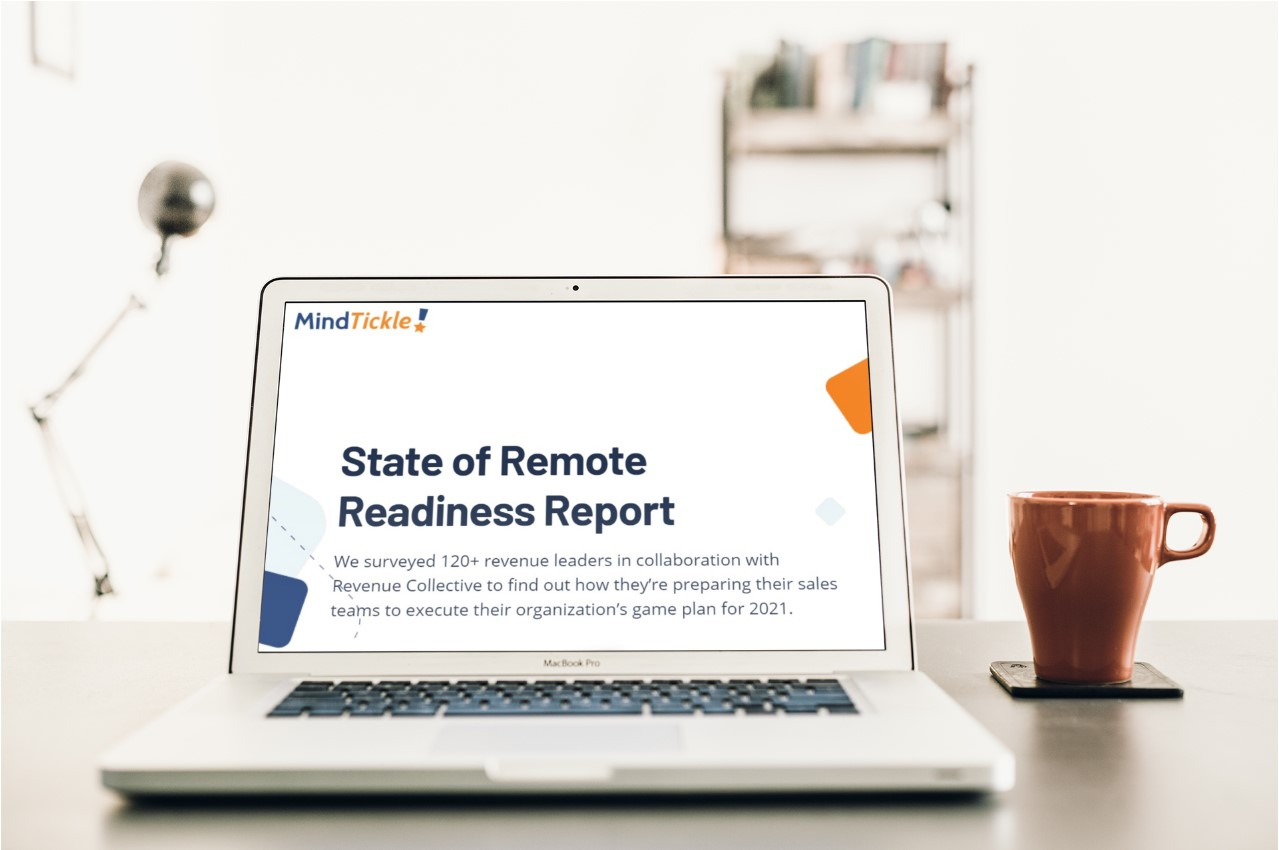As the COVID-19 pandemic forced companies to adapt to a work-from-home model at the drop of a hat, revenue leaders struggled to unify their sales forces and keep them up to speed on the latest technology and training.
According to new research from Revenue Collective, a private membership organization for commercial growth operators, and MindTickle, a sales readiness and enablement platform, a major disconnect exists between revenue leaders and sales teams, which is only amplified by the sharp uptick in remote workplaces.
The State of Remote Readiness Report found that 75% of revenue leaders feel “somewhat” effective at training their salespeople, while 17% say they’re not effective all. The top four problems revenue leaders are trying to solve include:
- Onboarding new salespeople (67%);
- Addressing a salesperson’s need for training or addressing a skill deficiency (40%);
- Bringing underperforming salespeople up to an acceptable performance level (39%); and
- Supporting a change in sales messaging (37%).
Furthermore, the report revealed that 50% of revenue leaders haven’t documented what it takes to be a successful remote sales rep. Respondents cited pain points such as:
- The need to prioritize more important initiatives (51%);
- Not enough free time to execute such projects (27%);
- Difficulty getting agreements across functions on key metrics/actions (15%); and
- A perceived inability to access a rep’s activity level on social channels (8%).
“The two biggest things people should take away from the report is the crosshairs between the amount of time spent onboarding and training and the time that’s lost from lack of reinforcement,” said Aaron Leeder, Sr. Director of Partnerships & Alliances at Revenue Collective, in an interview with Demand Gen Report. “We’re already spending so much time on these things — if you don’t do a little extra after the fact, all that time is wasted and it’s almost painful because you have to spend more time to make it valuable and worth it.”
Recognizing The Difference Between Sales Training, Readiness & Enablement
A major source of the disconnect between revenue leaders and sales teams is that 48% of revenue leaders admitted that they couldn’t explain the difference between sales training, readiness and enablement.
In general, sales training provides foundational knowledge on products, processes and the organization; sales enablement provides information, content and tools to help the sales team sell more effectively; and sales readiness continuously empowers sales teams to be on message and on task every time they interact with a prospective client.
Sales readiness is the biggest outlier, as there’s no static definition and it varies from company to company, meaning teams must be aligned in their understanding of it. Revenue leaders can help unify that understanding through coaching sessions, role play, microlearning lessons, skill gap training modules, reinforcement quizzes and CRM trigger-based training.
“Every single sales representative, marketing person and product person should be unified in their companies’ understanding of sales readiness,” said Leeder. “It’s tricky and it’s new, but every single person in the company should know the difference between sales readiness and sales enablement.”
Curating A Tech Stack That Empowers Sales Teams
The report explains that the lack of understanding surrounding sales terminology makes it difficult for revenue leaders to identify what they need in their tech stack and choose the appropriate product. In fact, 76% of revenue leaders said they’re looking at point solutions to solve individual problems rather than one platform that would cover most issues.
That behavior contributes to a tech stack that’s difficult to manage, uses too many resources, takes time to navigate and implement and doesn’t seamlessly integrate with other technologies, which impacts a company’s ability to execute at pace, the report details.
To help alleviate those issues and identify a single tech platform that meets their needs, the report suggests revenue leaders can:
- Identify core metrics and document activities to establish a baseline for success;
- Staff-up and create a readiness motion, which will depend on the sales organization’s size, complexity of products or services and the buyers’ purchasing processes;
- Adopt tech that helps an organization scale and pivot quickly; and
- Provide access to data and insights that enable companies to continuously learn and improve enablement and readiness activities.
Establishing a successful tech stack that enables sales effectiveness, training and readiness takes time before seeing recognizable results. According to the research, the top three technologies revenue leaders are investing in include:
As remote work continues to dominant the industry, revenue leaders must keep up with the changes by providing comprehensive training, keeping their sales forces unified and streamlining technology stacks to increase their teams’ efficiency and effectiveness.







